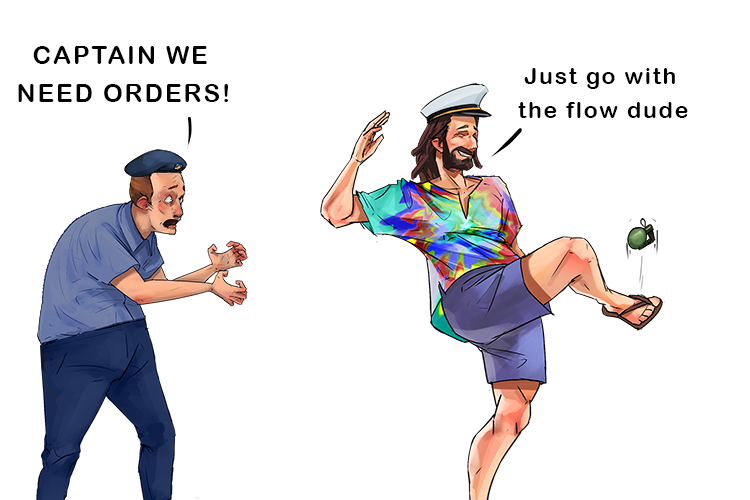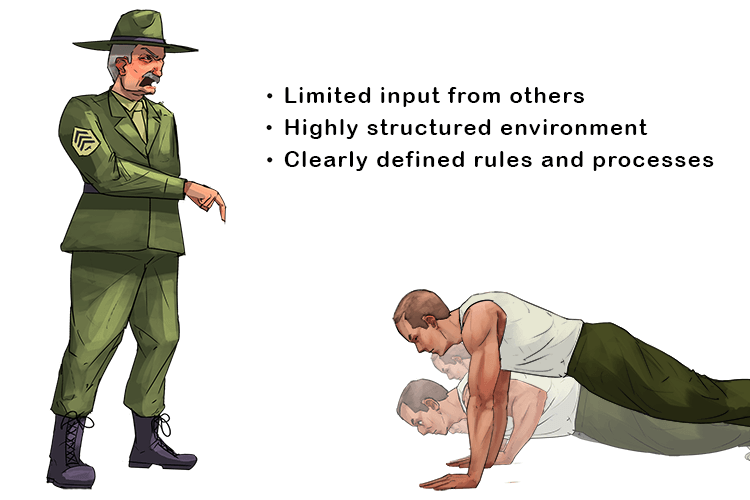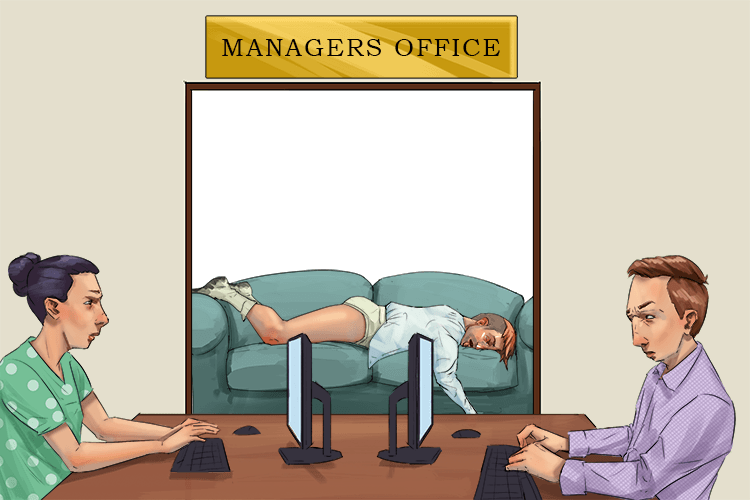styles of management – the methods used by those in leadership roles to achieve the most effective outcomes from the employees for whom they are responsible
To remember what styles of management means use the following mnemonic:
The styles worn by the management (styles of management) dictated their method of leadership.

Style of management is not about the clothes you wear or how you look (although this can have an influence), it is in fact the way in which a manager works to fulfil their goals. Management style includes the way that a manager plans, organises, makes decisions, delegates and manages their staff.
The style of management can have a significant impact on a business. The right style can help to improve employee morale, productivity and innovation. The wrong style can lead to employee dissatisfaction, low morale, and poor decision making.
There are many different management styles, but some of the most well-known styles include:
- Autocratic management: This style is characterised by a high level of control and decision-making authority by the manager. The manager makes all of the decisions, and employees are expected to follow them without question. This style can be effective in situations where there is a need for quick decision-making or where employees are not yet capable of making decisions. However, this style can also lead to employee dissatisfaction and low morale.
Autocratic management is used in the military where orders from leaders are expected to be followed completely. There are no concessions or compromises or room for discussion. When in battle there is no time for discussion, you need people to react immediately and without hesitation. Although there are different degrees of management style depending on a situation, nursing requires a high degree of autocratic management when an emergency occurs and a doctor needs to dictate what everyone should do. The doctor takes complete responsibility for the patient and every second counts. Everyone needs to know what to do and react according to what the doctor requires when instructed. It’s no good having group discussion when a patient arrives in an ambulance with possibly life changing injuries.

- Democratic management: This style is characterised by a high level of participation and input from employees in decision-making. The manager consults with the opportunity to voice their opinions. This style can be effective in situations where employees are motivated to innovate and present ideas. However, it can also lead to slower decision-making and a lack of clear direction.
Google is one of the most well-known companies that practices a democratic leadership style. Employees are encouraged to participate in meetings as much as possible because the top executives understand that a great idea can come from anywhere. Google’s leadership style is known for emphasizing innovation, creativity and collaboration, and encouraging employees to share ideas and have a voice in decision-making processes.

- Laissez-faire management: This style is characterised by a low level of control and decision-making authority by the management. Employees are given a high degree of autonomy to decide what happens in the company. If used properly, this management approach can result in high levels of innovation, but can possibly result in chaos if not used properly.
Advertising agencies rely on the creativity of the people in their teams. These people need free-rein to work in whichever way suits them to create outstanding ideas.

The movie industry has had films where directors have asked their actors to try something new, such as ad-libbing and improvisation. Actors can produce better films and use their experiences and creative skill to enhance the film.
Summary
The best style of management for a particular situation will depend on a number of factors, including the nature of the work, the skills and abilities of the employees, and the company culture. There is no one-size-fits-all answer, and managers should be prepared to adapt their style to different situations. One moment a manager may be autocratic the next democratic, depending on the circumstance. It is also important to note that the best management style may vary over time. As the business grows and changes, so too may the needs of the employees and the challenges facing the manager.
As in many businesses it is important to realise that these different styles of management can occur at different times in the same company business or institution.
Dwight D Eisenhower served as supreme commander of the allied D-day invasion of Normandy in World War 2. He used group discussion and experts for decision making, a sort of democratic style. However, when it came to implementation of these decisions, he would expect them to carried out exactly in an autocratic style.
If you are running a company, you can also discuss and have your ideas analysed by close management experts but again a supermarket check-out system for example would require staff to carry out these changed rules precisely.




